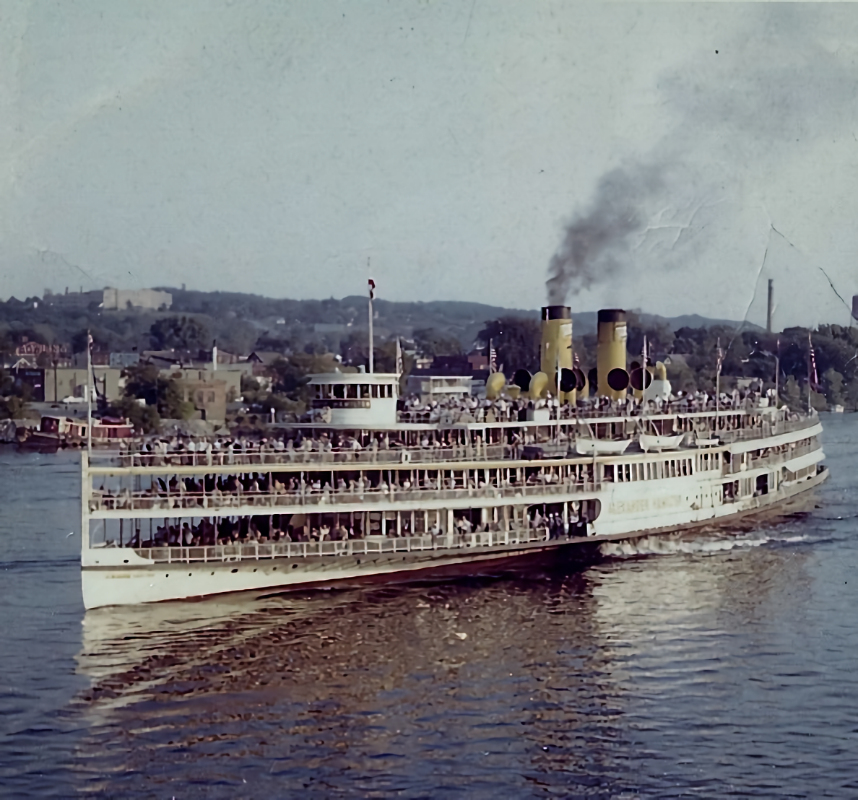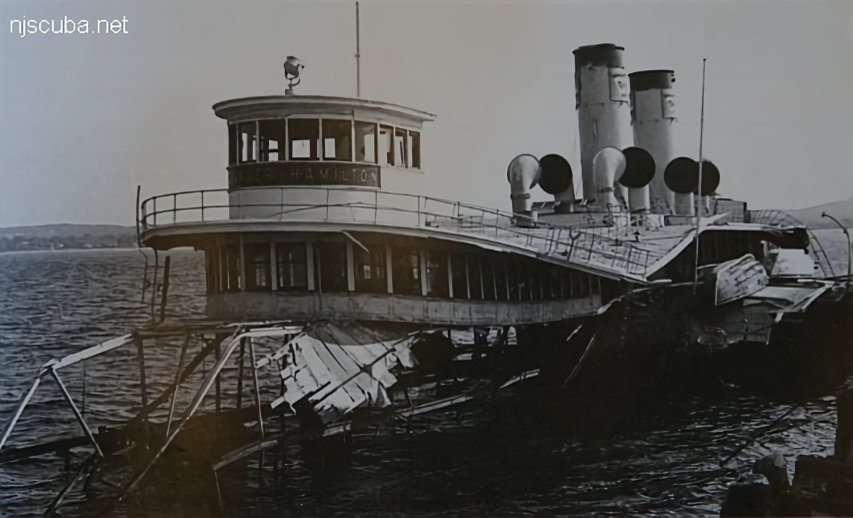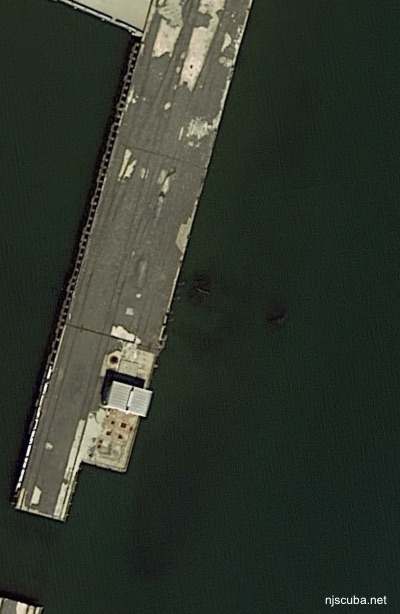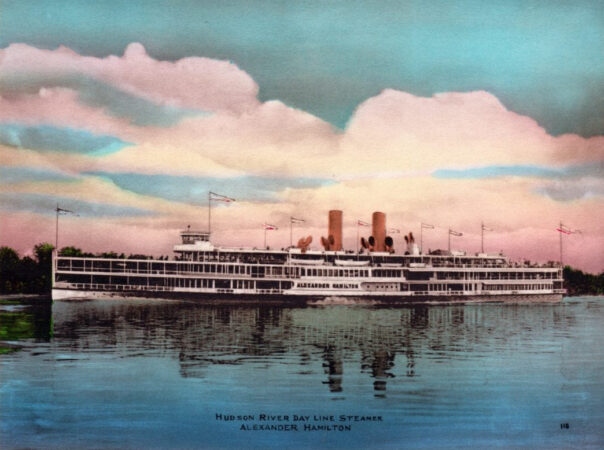On November 8, 1977, during a storm, the Passenger Steamship Alexander Hamilton caught fire and sank next to the Navy Pier in Raritan Bay, where she remains to this day, off-limits to visitors. In her heyday, she carried 3,500 passengers on various excursions and point-to-point passenger transportation. She was the last of the great Hudson River “side-wheelers.”

The Alexander Hamilton was built by the Bethlehem Shipbuilding Corporation in 1924 for the Hudson River Day Line, a passenger steamboat business founded in 1863. The Hamilton operated from 1924 to 1971, first running with other Day Line Steamers, including the Peter Stuyvesant until the 1960s, when the company was purchased by the Circle Line, and became a one-boat operation. Her service ended in 1971 when the U.S. Coast Guard would not permit wooden superstructures in the passenger trade; that year, the Hamilton retired with full television coverage for her final voyage.
The Alexander Hamilton was a side-paddle-wheel steamboat, with a teardrop-shaped hull; the ship had an overall length of 349′ 5″ and a draught of 8’ 4.” Built to handle more than 3,000 passengers, it boasted three complete decks and a partial fourth, all extending laterally over the edges of the hull, giving the ship an overall width of 77,’ much wider than the actual hull. The paddle wheels were of the feathering type, which kept each blade perpendicular to the water throughout the bottom ark of the swing.
Over the decades, the Alexander Hamilton was berthed at the South Street Seaport and Brooklyn Navy Yard before being purchased by Railroad Pier Co., which hoped to convert it into a restaurant in Atlantic Highlands. The ship arrived there on Monday, July 28, 1975, but the plans ran into various snags, as did the ship.
The Hamilton ran into a sandbar about 100 feet from the Atlantic Highlands shore. Stuck in the mud for two years, the ship was then sold to a Poughkeepsie firm that likewise sought to convert it into a restaurant and museum, but two tugboats could not budge her. On September 15, 1977, thanks to favorable northeast winds, a high tide and a lobster boat, the Hamilton was finally freed from the muck. She was then towed to a temporary berth along the east side of the Navy Pier at Naval Station Earle in Leonardo. On November 8, 1977, during a storm, she caught fire and sank next to the pier.



The Hamilton was added to the National Register of Historic Places on March 25, 1977. In the nomination, it was observed that:
The strut and post construction of the decks, rooms, and open spaces of the Alexander Hamilton, is more or less typical of naval architecture of the early 20th Century. Inasmuch as this was a major source of inspiration to the early modernist architects, notably le Corbusier, the Hamilton should be preserved. Because there are relatively few surviving examples of the ships which show that inspiration.
Today, she rests next to the older of two piers that extend more than two miles from the shore into Raritan Bay, within a national defense secure zone patrolled by the U.S. Navy. A sign next to it identifies her as a national historic site. Three words, “Do Not Disturb,” issue a warning to keep off.
Sources:
Alexander Hamilton. (2022). Https://NJScuba.net.
Graulich, David. (1977). The Daily Register, Red Bank, N.J., August 26, 1977, P. 13.
Radel, Dan. (2016). Largely Forgotten Steamship Still at Bottom of Navy Pier. Asbury Park Press, Asbury Park, N.J., August 19, 2016.
Steamer Alexander Hamilton. (1976). National Register of Historic Places Inventory, Nomination Form, United States Department of The Interior, National Park Service, March 25, 1977.
Tugboats Can’t Budge Steamship. (1977). The Daily Register, Aug 30, P. 9
Photo of PS Alexander Hamilton approaching Albany courtesy Hudson River Model Steamboats, http://rex-stewart.blogspot.com/.


Leave a Reply